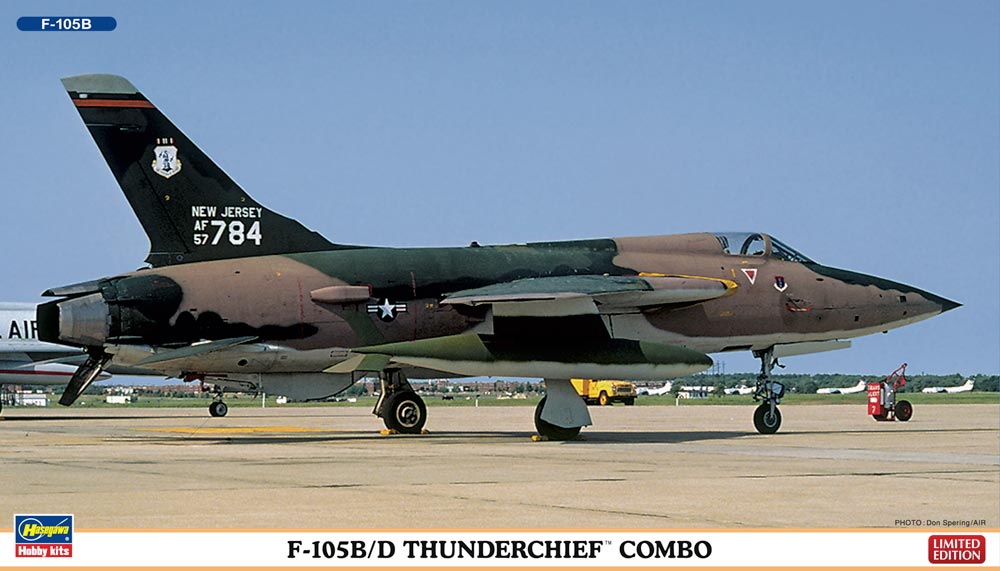F-105B and F-105D (Double Kit)
History Brief
When the F-105 Thunderchief entered service in 1958, it was the heaviest single-engine combat aircraft and was commonly known as the "Thud" by its crews. In March 1956 the USAF placed an order for 65 F-105Bs and 71 were built. Although it set speed records the 105B was besieged with problems, typically the F-105B required 150 hours of maintenance for each flying hour. Most of these problems were addressed under Project Optimize and by 1964 it was relegated to ANG squadrons.
The F-105C (the missing link) was a proposed dual-control trainer; canceled in 1957, none were built. The U.S.A.F. was gradually changing the anticipated F-105 mission from nuclear interdiction to conventional bombing. The F-105D was the primary aircraft type designated to deliver heavy bomb loads against various military targets. Like the F-105B, the F-105D's early career was plagued with maintenance problems and in-flight failures. In spite of a troubled early service life, the F-105D became the dominant attack aircraft early on during the Vietnam War. The F-105’s extensive weapons capabilities made it a hit with the U.S.A.F. and although less agile than smaller MiG fighters the F-105s were credited with 27.5 kills. Today the F-105 remains history's heftiest fighter, weighing close to 50,000 pounds (23,000 kg). Despite its considerable size, the F-105 could still achieve Mach 2 speeds at high altitudes. There were over 20,000 Thunderchief sorties flown with 382 aircraft lost (nearly half of the 833 produced) including 62 operational losses.
The Product
This limited edition kit combo features two F-105 Thunderchief kits. My sample arrived in a standard size box with a glossy photograph top. Inside I found two kits molded in hard gray plastic. The plastic is cast from older molds and they’re really showing their age. They have raised panel lines, a fair amount of flashing, large injector pin marks/stubs and sink marks. Total Parts (Per Kit): 46 & 47 with each in its own poly bag sharing one common B&W instruction sheet and decal sheet.
Decal Options
- F-105B: NEW JERSEY ANG 108TFW 141TFS Code: 57784 (Camo)
- F-105D: U.S.A.F. 23TFW 563TFS Code: 24386 (NMF)
The Build
The kits are simple and straight forward so I’ll run you through my notes. Both kits share common parts with only the fuselages halves being different. First you will need to add 5 grams of nose weight to each kit. Next, the cockpits are empty featuring only the dash panel with decal and a simplified looking pilot figure. To cover the weak cockpits, I elected to paint over the canopies. The gear bays, landing gear and wheels are featureless except for injector pin stubs/marks. The wing pylons are also plagued with the pin stubs too. Despite their age the fuselage fit is better than average but not so for the rest of the kit. Once assembled I shot two heavy coats of high-build primer to hid the seams before I painted them. I think these kits can be made into decent models but it will take extra effort. The decals were hard and brittle and resisted Solvaset.
The Bottom Line
I think the kit molds are showing their age with the flash present and the decals are problematic. They can be made into show stoppers but will need new cockpits, rescribed and a lot of time and effort.
Thanks To: Hobbico, Hasegawa and IPMS for the opportunity to present these models.


















Comments
Add new comment
This site is protected by reCAPTCHA and the Google Privacy Policy and Terms of Service apply.
Similar Reviews